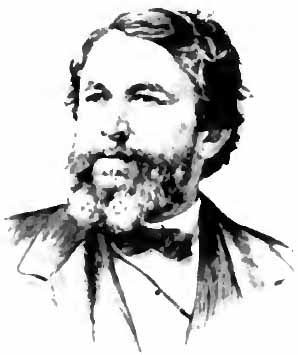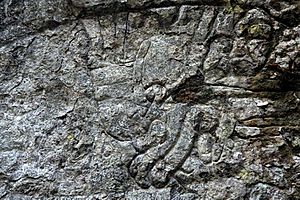Tenampua facts for kids
Tenampúa is an ancient place in central Honduras that was built by the Lenca people a very long time ago, around 1,500 years ago! It's special because it has many large mounds, some as tall as a five-story building, and a strong fortress. This site is high up in the mountains, making it hard to reach, which was good for protection. The area is also beautiful, with lots of pine trees and a cool, breezy climate.
Contents
What Tenampúa Looks Like
Tenampúa is found deep inside a pine forest, about 57 kilometers from Tegucigalpa. It sits on a high, flat area with steep sides, making it a natural fortress. From here, you can see amazing views of the Comayagua valley and the mountains around it. This was a perfect spot for the Lenca people to build their fortified city.
The whole area of Tenampúa is about 21 hectares, which is like 21 football fields! It has many mounds, flat platforms, and a strong fortress with walls that were once two to four meters high. Inside the fortress, there are pyramid-shaped structures, some reaching 6 to 12 meters tall.
You can also find other interesting things here, like old stone steps and mounds that were once a special ball court, where ancient Mesoamerican cultures played a game. There are also rock carvings and ancient art in nearby caves. Over 250 structures have been found at the site, though many are still covered by trees and plants. Sadly, some parts of Tenampúa were damaged over time because people took stones or artifacts from the site. Because of this, it was officially protected as a cultural heritage site in 1997, and now guards help keep it safe.
A Glimpse into Tenampúa's History
We don't know everything about Tenampúa, but we do know the Lenca people built it during an early period of Mesoamerican history. It was used as a special place for ceremonies and also as a safe hideout. It's not clear why the Lenca people eventually stopped using it for their religious rituals. Perhaps it became more important as a military fort during battles with other groups, which makes sense given the strong walls found there.
Archaeologists think that people living near Tenampúa might have slowly moved to lower areas, like the valley, leaving Tenampúa behind.
In the 1800s, an American explorer named Ephraim George Squier visited the ruins in 1853. He was amazed by how big the site was and how it was built so high up in the mountains. He thought it was an incredible engineering feat for its time.
Later, in 1924, the area around Tenampúa was affected by a civil conflict in Honduras, which caused some damage to the structures. An archaeologist named Federico Lunardi visited in 1948 and noted that some parts, like old ponds and palaces, were still visible. This suggests the site might have also had nice areas for important leaders and priests.
Today, you can visit Tenampúa, but it's still a bit tricky to get there because it's in a mountainous, wooded area far from towns. However, there are guides who can help people explore this amazing ancient site.
What Has Been Found at Tenampúa
Researchers have discovered many interesting things at Tenampúa. They've found beautiful pottery with detailed carvings and decorations. They've also found arrowheads made of obsidian (a type of volcanic glass) and carvings made from jade.
Another exciting discovery includes small statues that represent gods from Lenca Mythology, such as Itanipuca, Ilanguipuca, and Icelaca. These findings are now displayed in museums in Comayagua and Tegucigalpa, where you can see them up close. Some researchers also believe there are more temples hidden nearby, though many are now collapsed and covered by plants due to time and weather.
See also
 In Spanish: Tenampua para niños
In Spanish: Tenampua para niños





